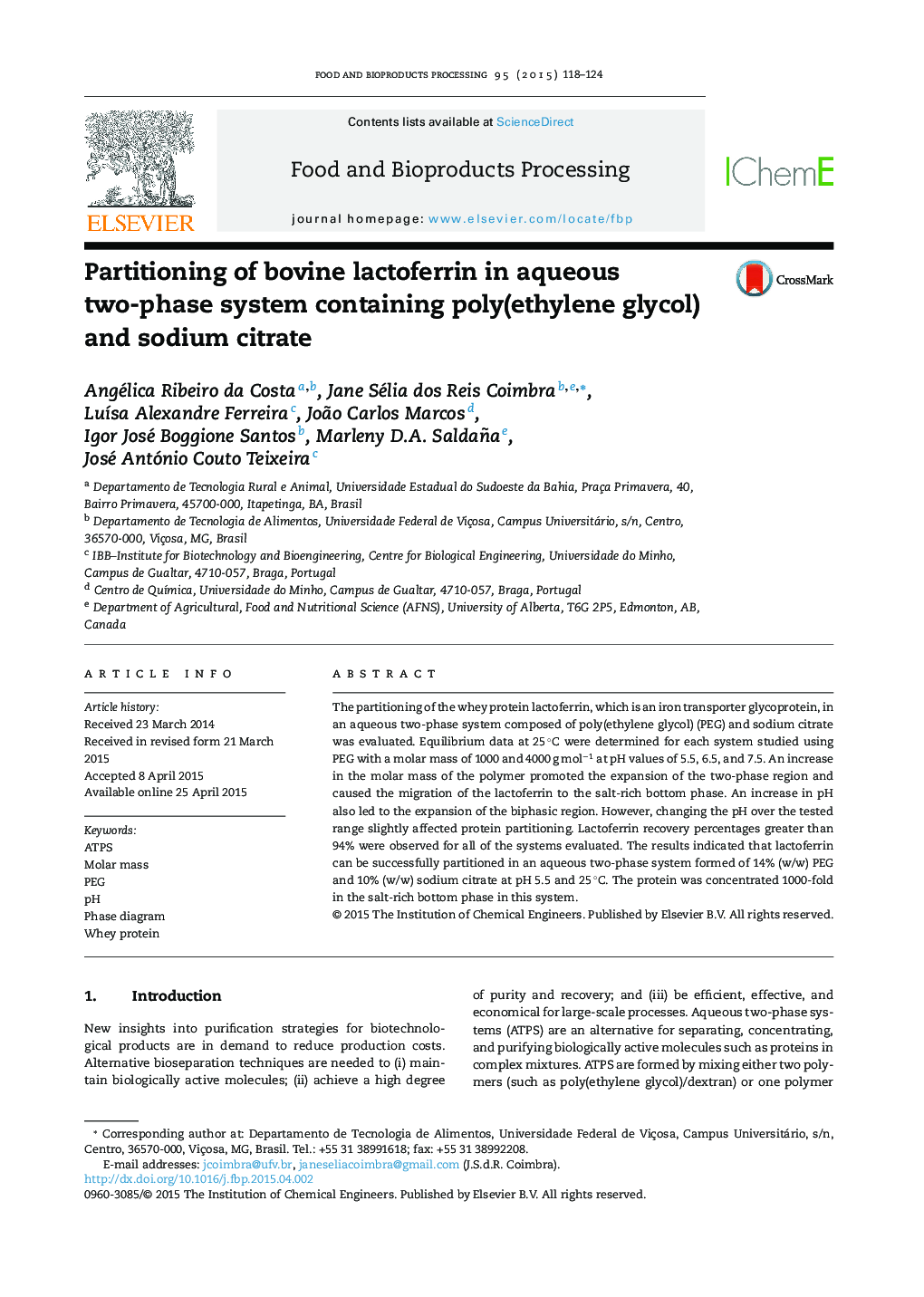| Article ID | Journal | Published Year | Pages | File Type |
|---|---|---|---|---|
| 19009 | Food and Bioproducts Processing | 2015 | 7 Pages |
•Equilibrium data were measured for PEG + sodium citrate ATPS at 25 ̊C.•Merchuk model was successfully adjusted to the experimental data of binodal curve.•Influence of PEG molar mass and pH on thermodynamic variables were determined.•Lactoferrin was partitioned to the salt-rich bottom phase.•Protein-transfer process is driven by entropic contributions.
The partitioning of the whey protein lactoferrin, which is an iron transporter glycoprotein, in an aqueous two-phase system composed of poly(ethylene glycol) (PEG) and sodium citrate was evaluated. Equilibrium data at 25 °C were determined for each system studied using PEG with a molar mass of 1000 and 4000 g mol−1 at pH values of 5.5, 6.5, and 7.5. An increase in the molar mass of the polymer promoted the expansion of the two-phase region and caused the migration of the lactoferrin to the salt-rich bottom phase. An increase in pH also led to the expansion of the biphasic region. However, changing the pH over the tested range slightly affected protein partitioning. Lactoferrin recovery percentages greater than 94% were observed for all of the systems evaluated. The results indicated that lactoferrin can be successfully partitioned in an aqueous two-phase system formed of 14% (w/w) PEG and 10% (w/w) sodium citrate at pH 5.5 and 25 °C. The protein was concentrated 1000-fold in the salt-rich bottom phase in this system.
Graphical abstractFigure optionsDownload full-size imageDownload high-quality image (168 K)Download as PowerPoint slide
